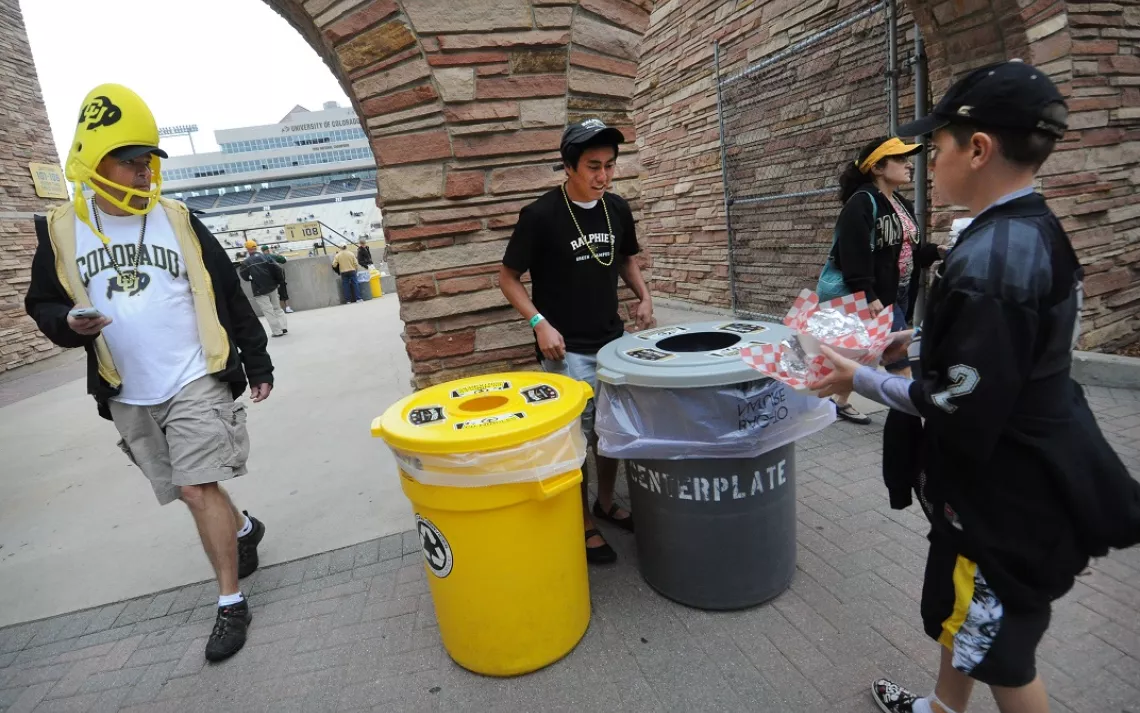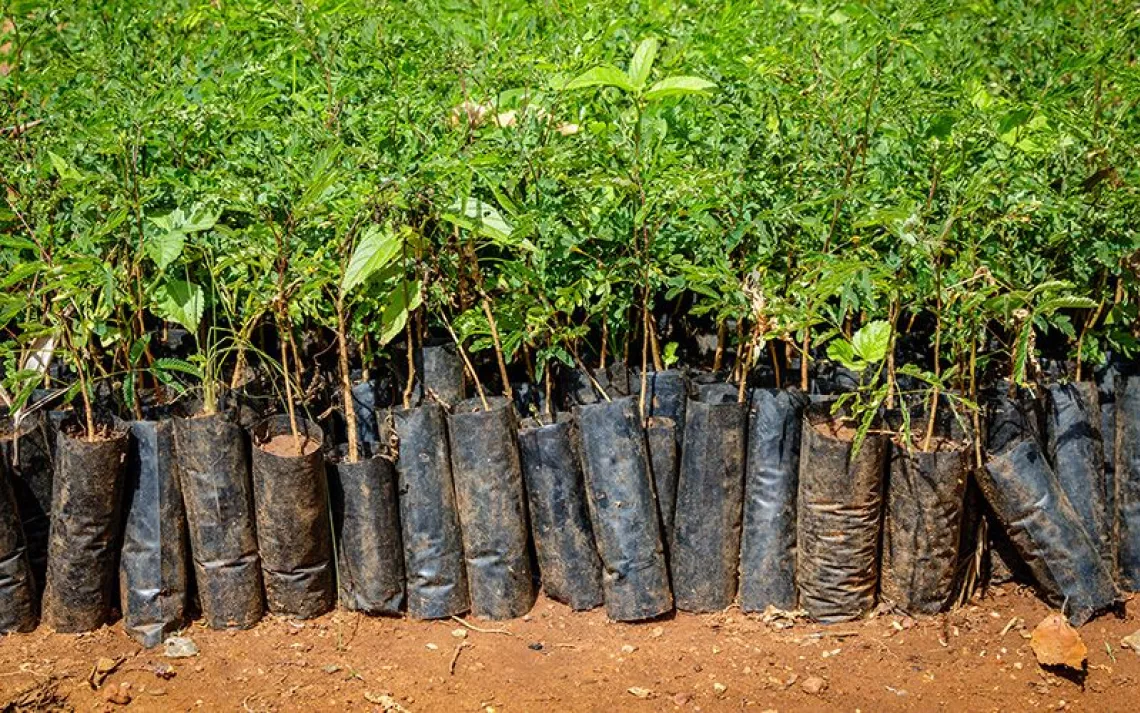Greening Game Day, and Every Day in Between

Alex Mitoma (center), a CU-Boulder environmental engineering student, shows football fans which bin to use during a football game at Folsom Field. | Photo by Glenn Asakawa/University of Colorado
Nationwide, more than 460,000 college-student athletes compete across 23 sports annually. All those games draw a lot of spectators, a fact that CU-Boulder Environmental Center director Dave Newport is keenly aware of. “The power of sports to influence fans’ behavior is profound,” he says, and is one reason he’s worked to extend university-wide green initiatives into the athletic department.
Newport says that CU-Boulder athletics “gets its house in order” by maintaining the university’s 90-percent waste-diversion rate at every game, avoiding chemical pesticides and fertilizers on turf, and purchasing carbon offsets. A thermally controlled net-zero-energy football practice facility (“basically a power plant,” Newport says) will be completed in January 2016, powered by 45,500 square feet of solar panels.
Newport likes to point out that the green practices of the athletics department and the university as a whole are a natural reflection of the surrounding community. Boulder residents complete nearly two-thirds of their trips by foot, bike, or bus, and the city plans to reach an 80 percent reduction in greenhouse gas emissions by 2050. “The people here demand a commitment to sustainability,” he says. “If we don’t show up on this issue, we’re naked.”
CU-Boulder launched the NCAA’s first Division I zero-waste program in 2008, which means that Folsom Field, the university’s football stadium, diverts 90 percent of its waste from landfill through recycling and composting. To accomplish this, food vendors switched “virtually all” of their stadium packaging, such as food trays, wrappers, and cups, to recyclable, compostable, or refillable materials. The stadium no longer has trash containers available to the public. Instead, student volunteers monitor recycling and composting stations to help fans sort their waste.
Other U.S. college sports programs have followed CU-Boulder’s example and implemented zero-waste initiatives, including Ohio State University, which, in 2014, diverted more than 95 percent of its waste at Ohio Stadium. The University of Florida's athletic program—the first in the United States to achieve carbon neutrality—employs a “Green Team” to help fans compost during games, while nearly 100 percent of the concession packaging at the University of Washington’s Husky Stadium is either recyclable or compostable.
But to Newport, what the fans do outside the stadium is just as important. This fall, the CU-Boulder athletic program plans to launch a recycling campaign called Bring Your Bottle Back to Life. The program will encourage fans to recycle plastic bottles, which the university will use to produce logoed apparel made out of a minimum-50-percent PET, an easily recyclable plastic. Participants will receive discounts on the apparel by earning points through the program.
“We want to help fans get their house in order,” Newport says. “The future is all about using the platform of sustainability in college sports to influence people to embrace sustainable behaviors. It’s not just game day. It’s every day.”
 The Magazine of The Sierra Club
The Magazine of The Sierra Club



